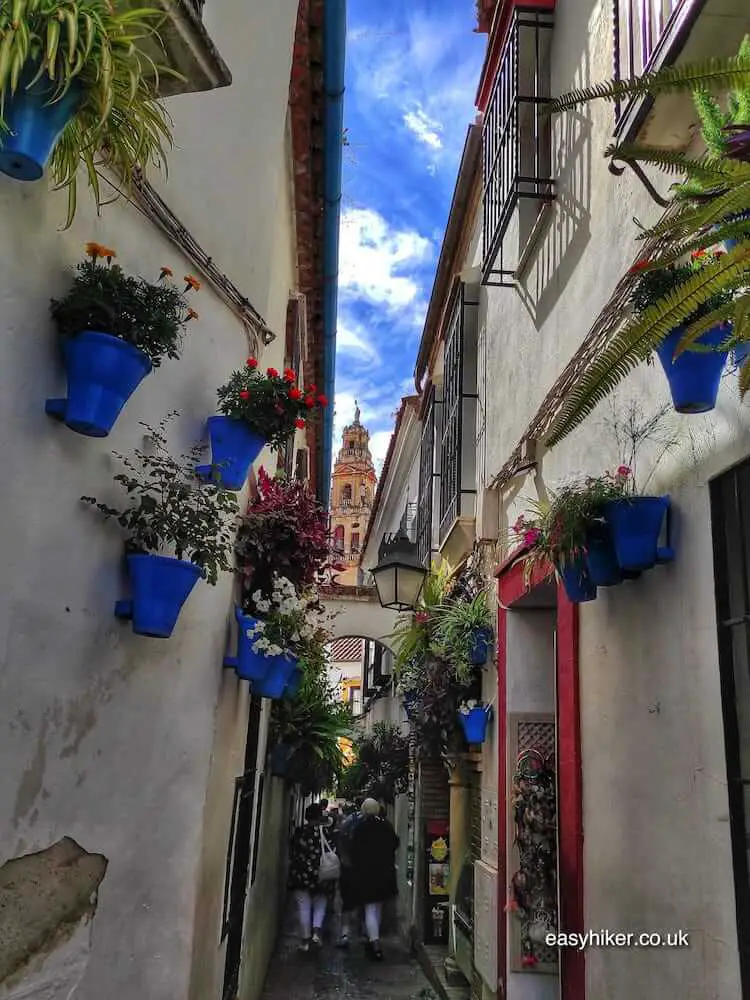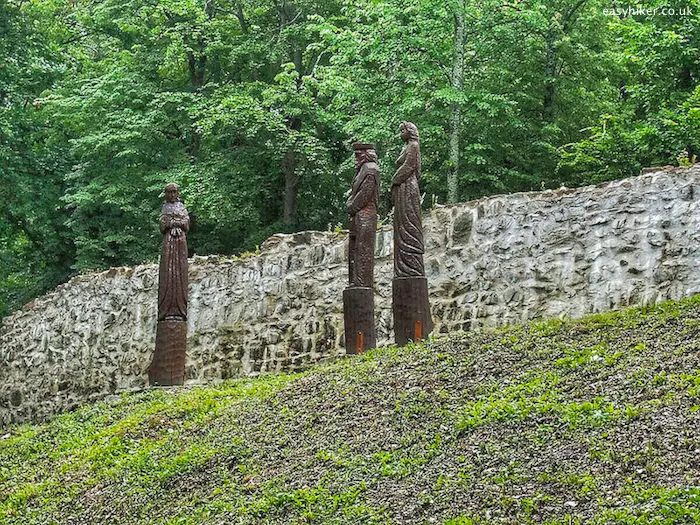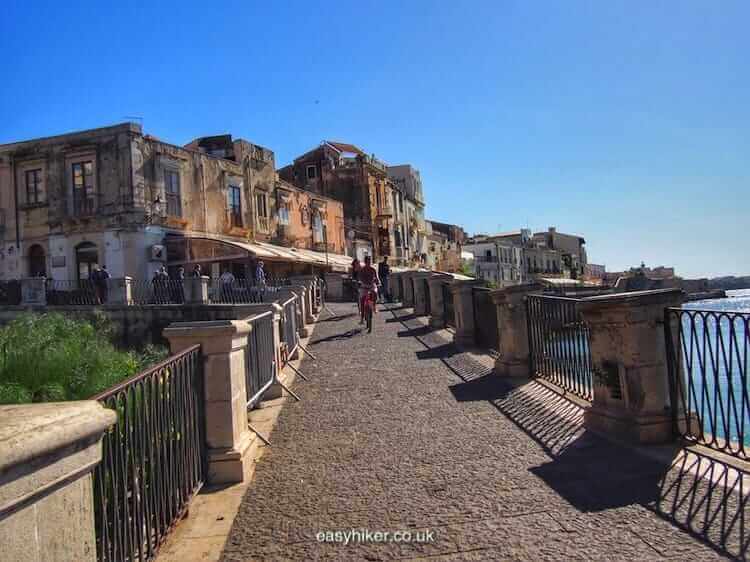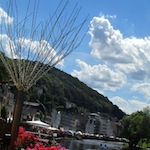Cordoba in the south of Spain is the hottest town in Europe. Temperatures reach an average daytime high of 37° centigrade in July and August (100° F). In July 2022, the city experienced 19 days with 40° or more (104° F), a record for any European city, and one day in April 2023, the thermometer climbed to 38.8° centigrade, another European record for a day so early in the year.
We visited Cordoba on the day when the municipal authority deemed it safe to remove the sunscreens that had been protecting the town’s high street all summer long from direct exposure to the sun – and this was in mid-October.

How to combat the excessive summer heat: Cordoba’s inhabitants have wrestled with this challenge since the town was established by the Carthaginians in early antiquity and throughout the rule of the Romans (Cordoba was the hometown of the philosopher Seneca, the teacher of the boy who grew up to become the Emperor Nero) as well as during the reign of the later Visigoth and Muslim conquerors (for 300 years, Cordoba was the largest city in Islamic Al-Andalus).
For all of these 2500 years, the heat has also served as a great social leveler: under the scorching Andalusian sun, the rich and the powerful – nobles and wealthy merchants – suffered every bit as much as workers and artisans.
To see how people from different backgrounds and walks of life dealt with the summer heat in similar and yet different ways: this is one of the most interesting things you can do on a visit of Cordoba – which is also, strangely perhaps, also a perfect introduction to the city’s beauty and charms.
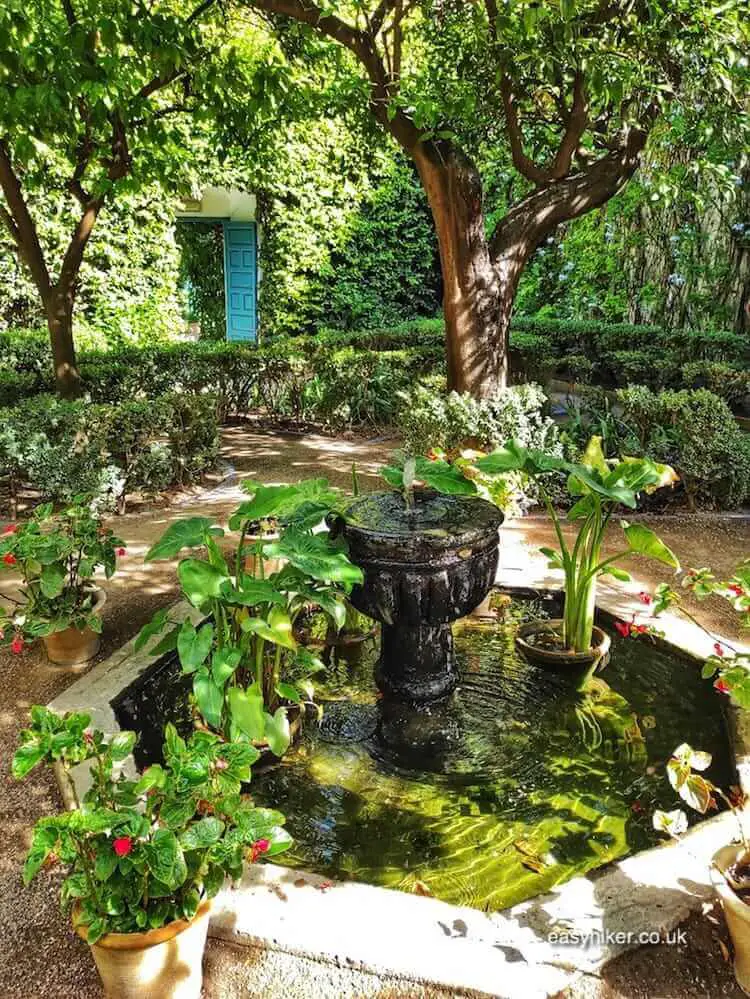
We can no longer reconstruct what the Visigoths may have done to combat Cordoba’s hot summers, but ever since the Moors ruled the south of Spain, the answer appears to have been to build the Cordoba patios.
With residential homes baking in the merciless sun (during the summer months, Cordoba “enjoys” more than 10 hours of cloudless skies every day), the indoor heat becomes stifling so quickly that for most of the day, an escape into the open air seems the only solution. As a consequence, most homes in Cordoba are characterised by the fluidity of their boundaries between inside and outdoor spaces.
This is true for grander mansions …

… as well as for simple residential dwellings where the tradition of blurring the lines between indoors and outdoors has survived to this very day.
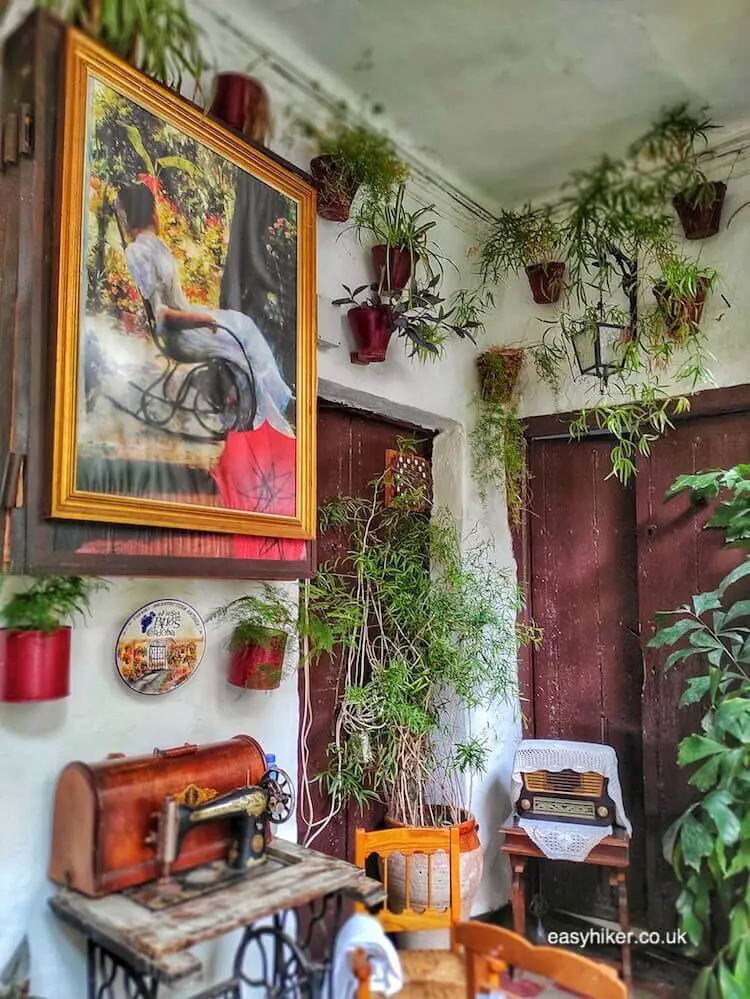
There are three ways of exploring Cordoba’s rich heritage of patios. One is to stroll through the city centre streets and to have a look at whatever is on offer. Which is more than you might think.
But while the front gates of many buildings are left open for visitors to take a peek (perhaps at the gentle persuasion of the municipal tourism authority), the patios themselves are usually closed off, and a peek is all that you can get.

Occasionally, you will come across a public building, often a former monastery that has been converted into an academy or municipal offices. Here, you may be able to walk around more freely, as you can in the courtyard of the Santa Clara Convent at 22 Calle Rey Heredia near the city centre.
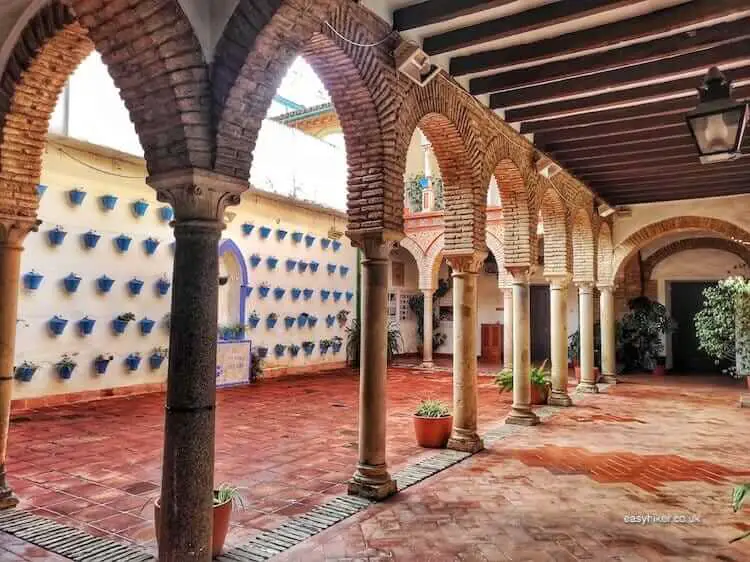
For a deeper and more systematic exploration, however, we recommend the short trip from the town centre to the quarter of San Basilio approx. 500 metres further south.

San Basilio has always been a quartier populaire, as the French call the traditional residential areas of workers and artisans, and it still is.
Many of the buildings have opened their patios for the public – without charging an entrance fee although small donations are accepted (and, generally, expected) – but it may be a good idea to invest a few euros in the Ruta de Patios ticket that gives you access to five such Cordoba patios. You can find more information here.
Just remember that you are not visiting museums but the homes of ordinary citizens who spend much of their lives in these courtyards and use them as sitting rooms, often literally so.

These patios all resemble each other. Recurring motifs include flower pots (if you have peeked into some of the town centre patios, they will be familiar to you by now) …
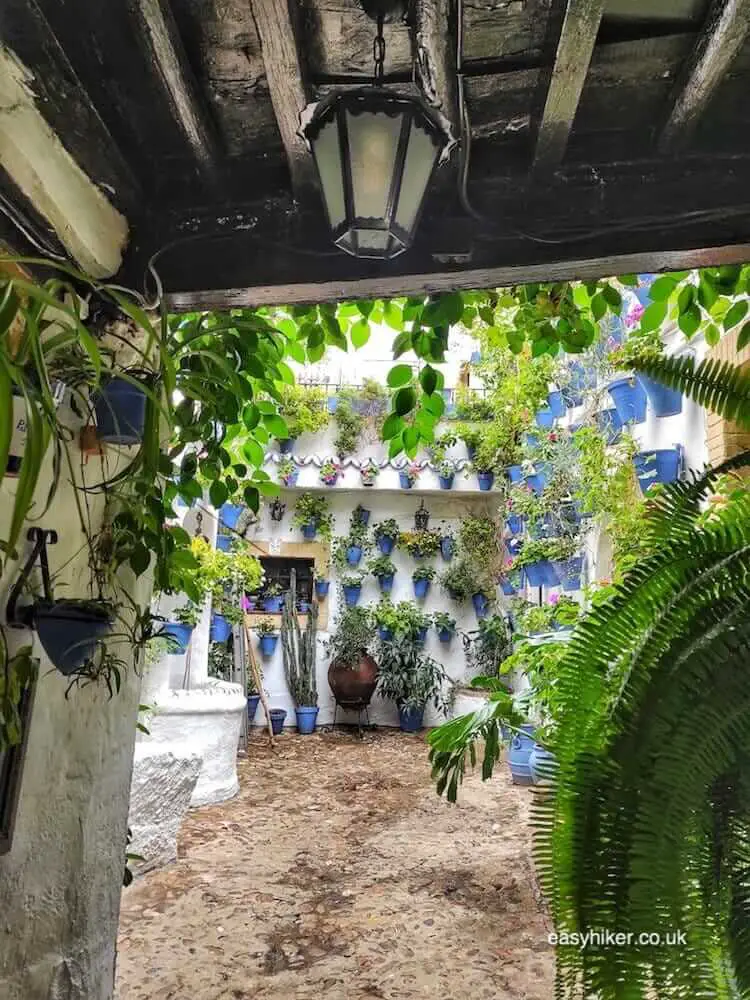
… and, above all, water.
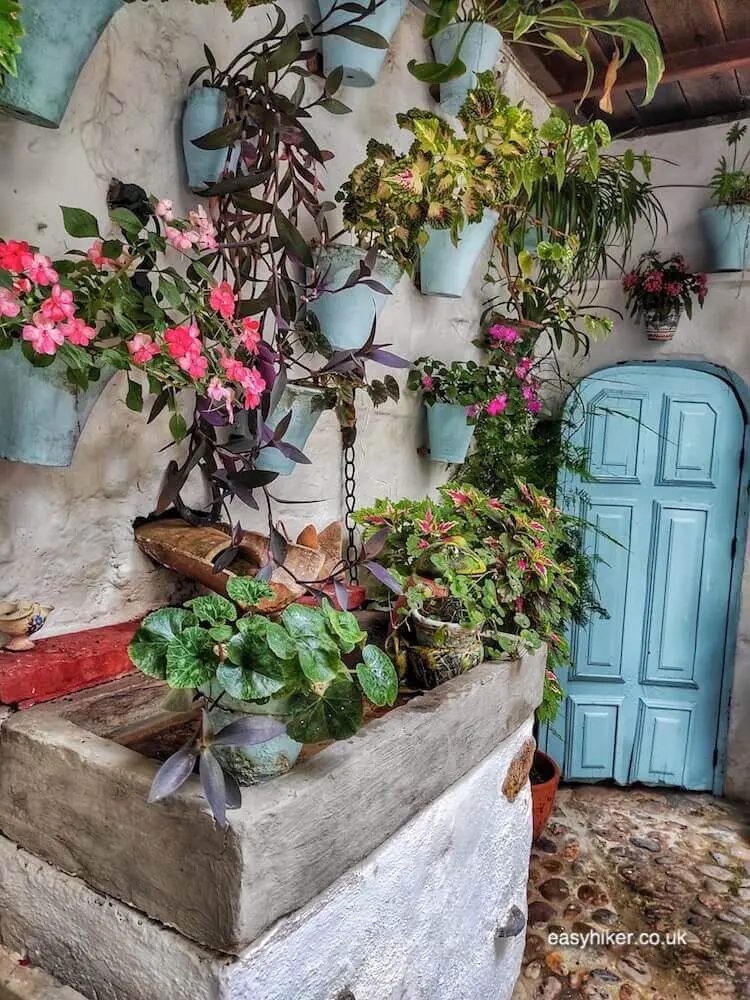
All of these patios have a water feature, if only on a small scale: tubs and pots rather than pools or ornamental fountains. Water, after all, is both the oldest and the most up-to-date instrument of cooling, a key component of medieval and modern cooling technologies alike. (One cannot help wondering, however: will citizens of the future marvel at our 21st century air-conditioning units – and be delighted by their charms?)
If you want to see how the same ancient technology worked on a larger scale, you should conclude your exploration of Cordoba patios by visiting the Palacio de Viana in the north of the city centre. This aristocratic Mudejar residence was built in the 1300s by Spanish nobles following the reconquista of Cordoba in 1236 and was inhabited by a local family until the late 20th century.
The palace is also known as the Museum of the Patios because it contains 12 of them, some of which – like rooms in aristocratic palaces all over the world – were mainly laid out to impress visitors, while others served more private purposes.
But all of these patios are unified by the leitmotif of water: water in ornamental containers and basins, …
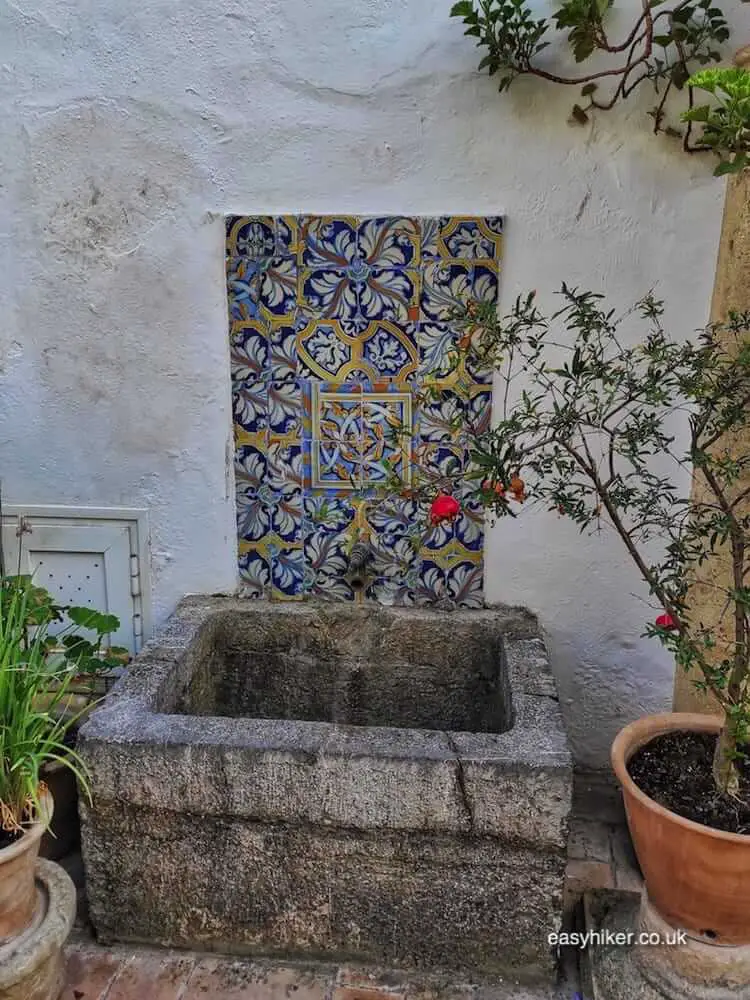
… but, above all, water in fountains of various shapes …
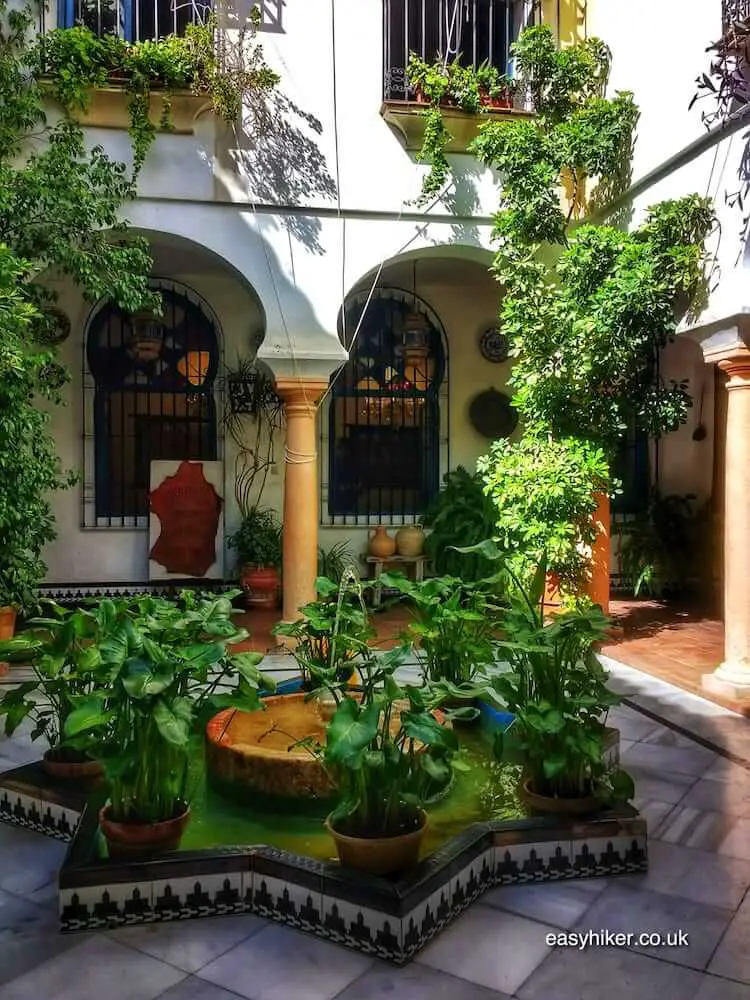
… and sizes …
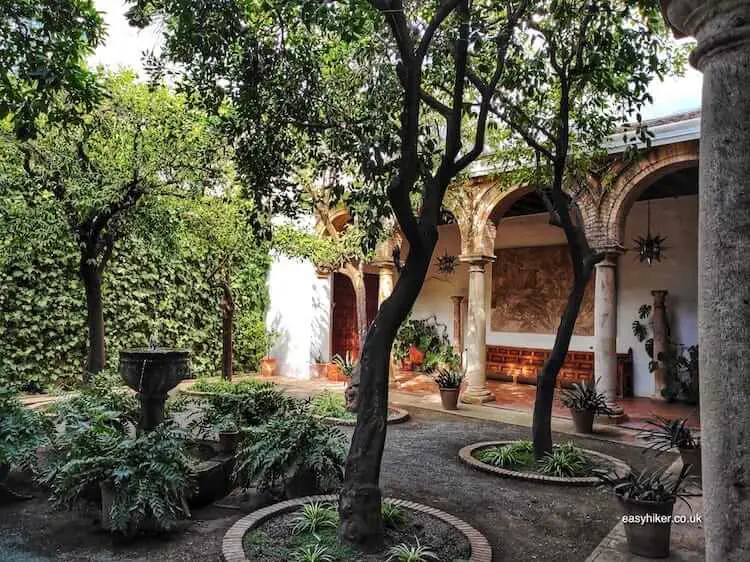
… that sometimes work as standalone features but at other times have been integrated into entire systems of artificial rivers that structure the space around them.
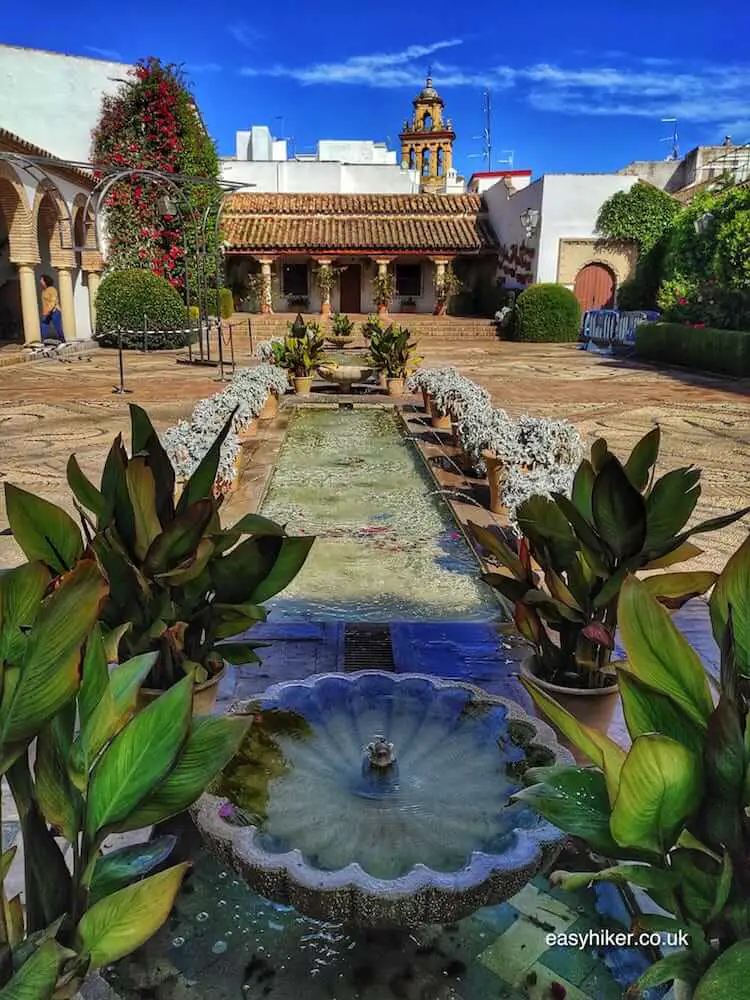
The patios of Cordoba alone are reason enough to pay a visit to Cordoba, but the city has a lot more to offer: a 2000-year-long history of peaceful coexistence and violent conflicts to start with, broad avenues and colourful side streets to stroll through, and on top of that the most beloved of Spain’s Twelve National Treasures.
We will tell you all about that next week.
